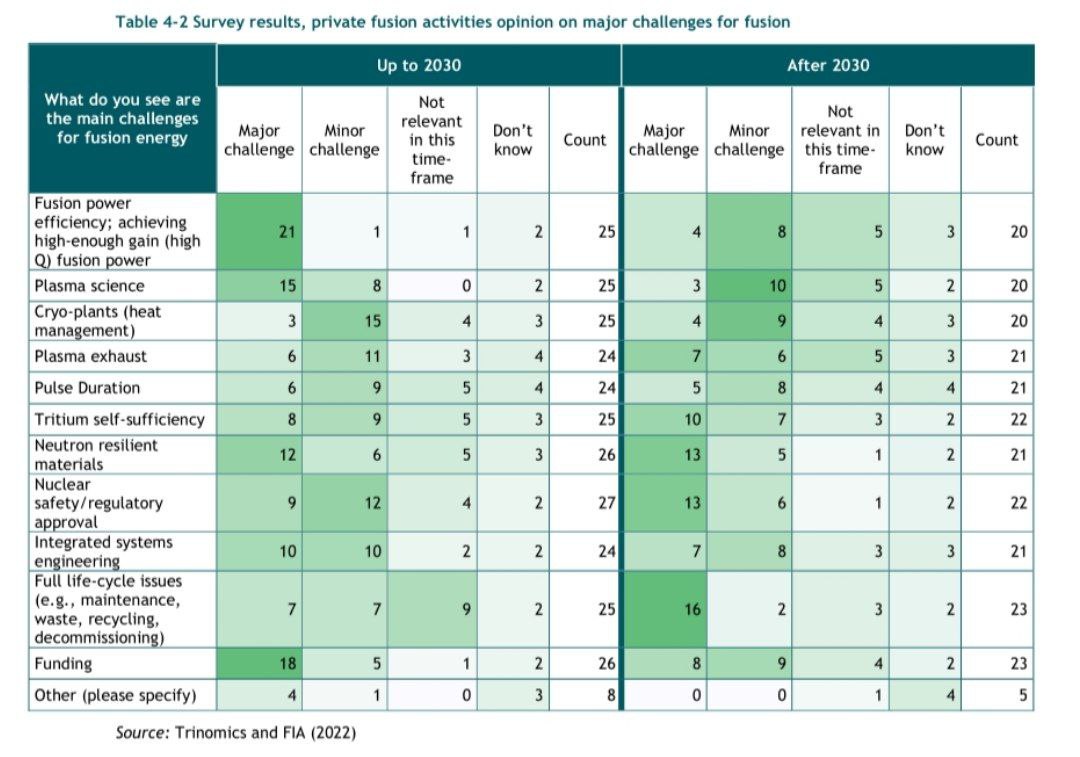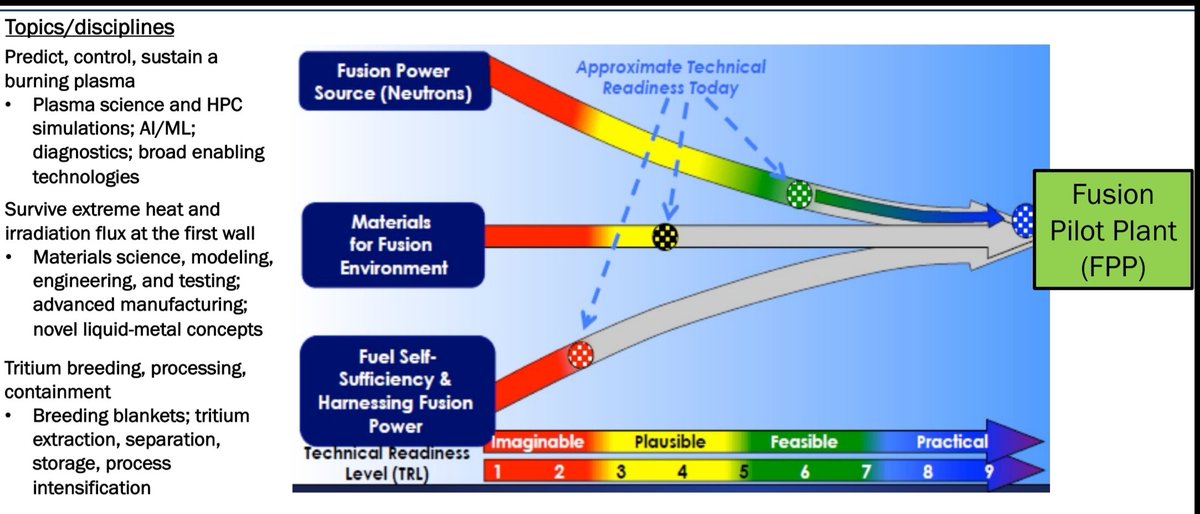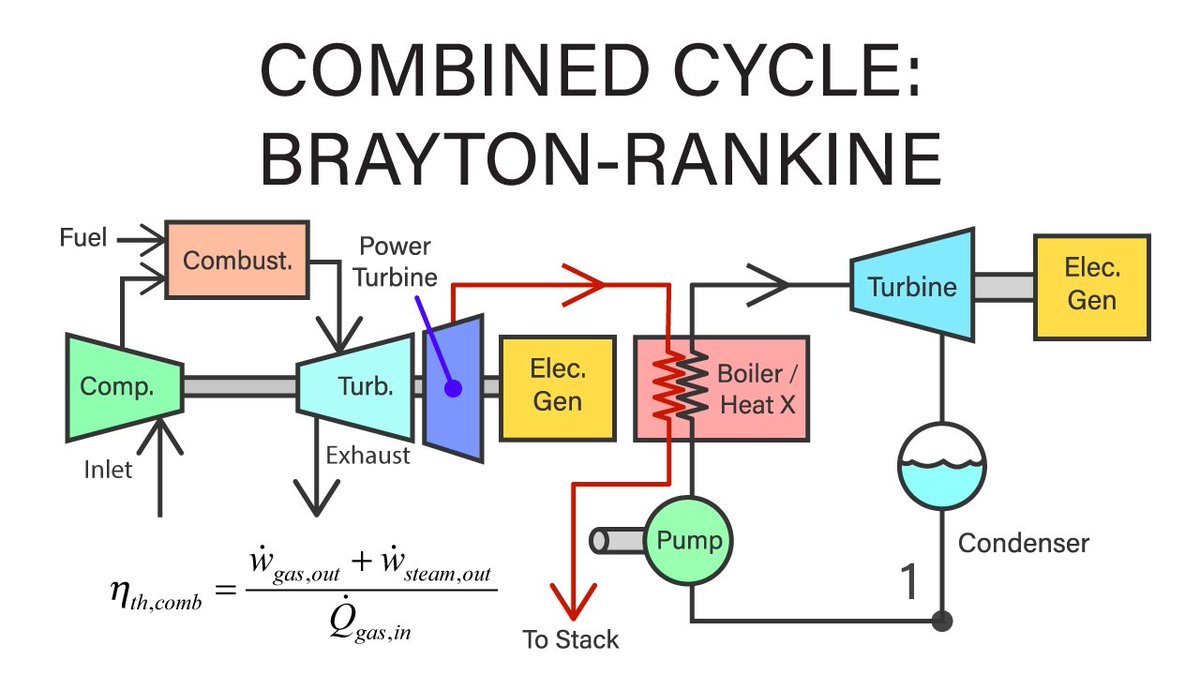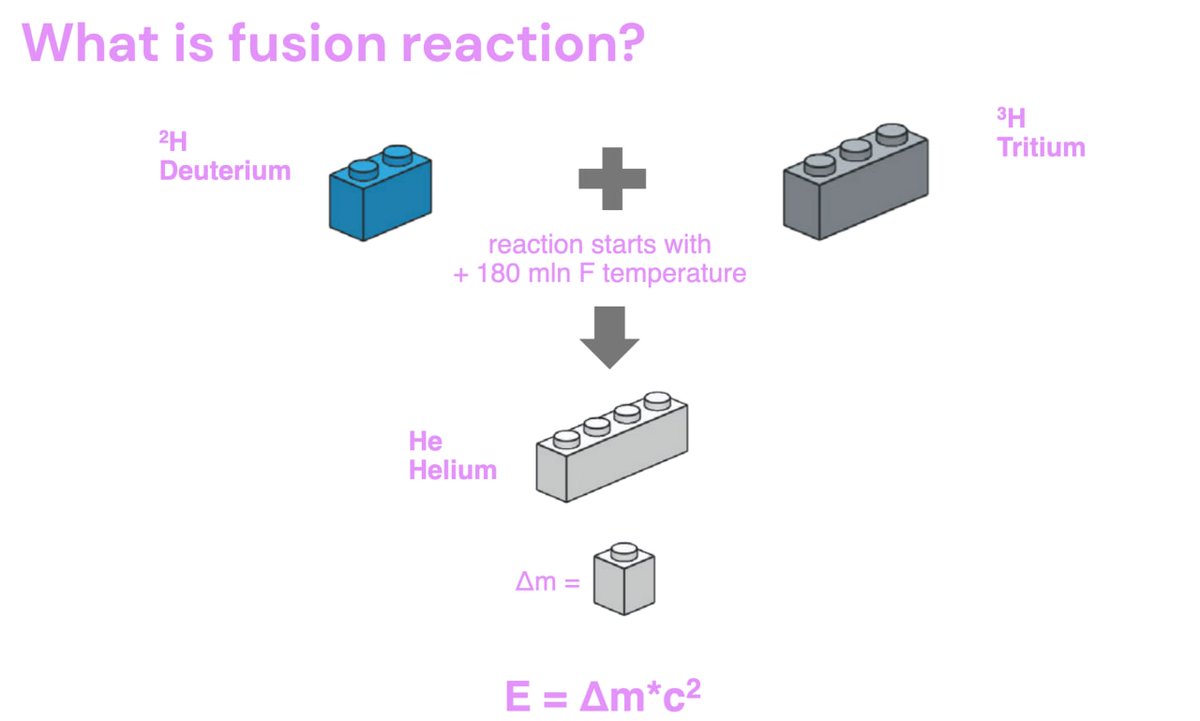Let's go through a brief summary of the
Foresight study on the worldwide developments in advancing #FusionEnergy, including the small scale private initiatives
Foresight study on the worldwide developments in advancing #FusionEnergy, including the small scale private initiatives
This study provides an analysis of the leading public and private fusion initiatives globally which has been used to generate 4 foresight scenarios for fusion development 

The study provides a picture of the most common challenges and barriers to fusion development as well 

Most of insights were based on the results of survey undertaken in collaboration with @Fusion_Industry in 2022 



Only a few of the interviewees had given significant thoughts about possible LCOE
However, a handful of firms were clear on the range of LCOE they wanted to target, where they would expect to be competitive in market, with target of around USD 50/MWh the most common marker
However, a handful of firms were clear on the range of LCOE they wanted to target, where they would expect to be competitive in market, with target of around USD 50/MWh the most common marker
CAPEX of pilot plants were also mentioned by some initiatives, ranging from a few hundred M euros to up to 10 B euros
Variations are very high, based not only on approach but also the size and characteristics of the plant, with capital costs scaling with planned MW capacity
Variations are very high, based not only on approach but also the size and characteristics of the plant, with capital costs scaling with planned MW capacity
There was little estimation of potential OPEX, as many parameters are not yet well known – however these are expected to be low in any case, with the capital cost by far the major part of the total cost of a fusion plant
Fuel costs are unclear, in the case of Tritium a major expectation is that beyond acquiring a seed amount of tritium to start-up reactors should breed the own supply in the fusion reaction
Costs and replacement cycles for major components, e.g., if breeding blankets or wall materials would need to be replaced every 10-20 years, were also unclear, but could constitute an important OPEX cost element
Among main recommendations:
1) Experience from @iterorg strongly recommends that industrial players and engineering systems integrators are involved in the DEMO design activities
This should help to reduce risks of delays and cost overruns
1) Experience from @iterorg strongly recommends that industrial players and engineering systems integrators are involved in the DEMO design activities
This should help to reduce risks of delays and cost overruns
2) ensure that a positive decision is taken on funding @IFMIF_DONES and that work is coordinated with other countries which also work on materials (UK, US, China) and with potential partners (Japan)
3) to promote more private fusion initiatives in Europe, it is needed to create programmes similar to ARPA-E and INFUSE
Further research would be beneficial to specify key parameters of such a programme and how it could work in the Horizon funding framework
Further research would be beneficial to specify key parameters of such a programme and how it could work in the Horizon funding framework
4) @EU_Commission should ensure that fusion is included within scope of relevant EU funding programmes, strategies & modelling exercises
f.e. EU Taxonomy for Sustainable Finance, ensuring fusion is specifically listed as a sustainable investment, separate from nuclear fission
f.e. EU Taxonomy for Sustainable Finance, ensuring fusion is specifically listed as a sustainable investment, separate from nuclear fission
5) Linked to visibility, @EU_Commission should also be careful to support messaging on fusion that encourages a positive public perception, avoiding strong links to nuclear fission👀
6) @EU_Commission should push for regulatory agencies to develop their approaches on regulation for fusion to provide clarity for the sector
7) @EU_Commission should continue to work via international agencies, e.g., @iaeaorg, to seek to harmonised regulatory approaches to fusion globally
8) examine how the EU could leverage its expertise in laser technologies to create a public inertial fusion energy programme – this would help to accelerate progress in this area beyond what is happening at @lasers_llnl and elsewhere
9) supporting EU industry to be well positioned – either as fusion energy developers, or as key suppliers to leading fusion initiatives, is crucial to fully benefit from eventual fusion energy commercialisation
Link to the document:
op.europa.eu/en/publication…
op.europa.eu/en/publication…
• • •
Missing some Tweet in this thread? You can try to
force a refresh











